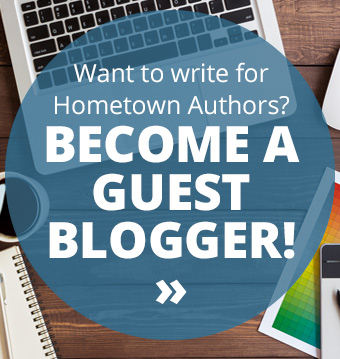Why Authors Need a Mailing List
When I published my first book, Forgetting English, back in 2009, social media wasn’t quite the phenomenon it was today. I had just joined Facebook, I wasn’t on Twitter, and Instagram didn’t even exist. Back then, I relied on email marketing to reach my readers — and I still do.
Today, the idea of email marketing may seem dated — but in fact, it remains one of the best and most direct ways to reach your readers. Keep in mind that having a good email list doesn’t mean you don’t need social media; it’s simply another opportunity, and it can be a vital one. For example, you probably have some Facebook friends who go months without logging in — but you’ll still want to make sure they know about a book giveaway or an upcoming event.
So how to begin?
First, find a provider (such as Mail Chimp, Mad Mimi, or Constant Contact; always start with a free account if you can). Next, ask family and close friends, followed by colleagues and more casual acquaintances, whether you may add them to your mailing list. And yes, you must always ask — never add someone to a mailing list without their permission. While it may seem easier to add people if you’re sure they’ll want to hear from you, it’s actually not very nice to clutter up their inboxes without their consent.
Whenever you do a book event, pass around a guest book or a simple sign-up sheet so that additional readers can sign up to receive your mailings. I always try to take the pressure off by letting people know my feelings won’t be hurt if they don’t want to receive my emails, and also that they can opt out at any time.
Upfront Communication
It also helps if you’re clear about what you’ll be sending. Don’t hide the fact that you’ll be sending out updates on your book; even if it sounds promotional, you need to manage expectations. Also, be sure to let subscribers know that you won’t be sharing their email addresses with anyone else.
Another thing to decide, and to let people know, is how frequently you’ll be sending news. You’ll want to find a nice balance between keeping subscribers up-to-date and not pestering them. If you’ve just launched a book, monthly e-news is appropriate; if you’re in between books, quarterly might be better.
Offer Value
Because we all get so many emails these days, try to offer a little more than promotion so that your subscribers feel valued. While the purpose of the email may be to promote your book, you might also offer book giveaways, a book club kit, bookmarks or bookplates, anything that offers incentive and reward for those on your list. For my own newsletter for writers (which I send out two to four times a year), I include a writing tip and a writing prompt, so that among with the promotional stuff there will always be something for writers. I always offer book giveaways when I have something new to promote.
Don’t forget to look great: Visuals are terrific for email campaigns, since no one wants to wade through a ton of text. Most people simply skim through newsletters, so you’ll want a mix of text and images to help keep readers’ attention and highlight what’s important. You must, of course, own the rights to any photo you use (an exception is your book cover, which you’ll be allowed to use for marketing purposes). Strive for simple and engaging, and don’t forget to include links to your social media accounts.
Accept (and Expect) Unsubscribes
Finally, try not to worry about the “unsubscribes.” Whenever someone unsubscribes from my list, I find myself worrying about all sorts of things. Was my email too boring? Was it something I said? Did they read my book and hate it? The fact is, people are overwhelmed with email and it’s probably not personal (and if it is, there’s not much you can do about it anyway, so it’s best not to fret over it).
Most often, I suspect, people unsubscribe for reasons having more to do with their own lives than with the content of your email. If you find you’re getting a ton of unsubscribes, it may be worth considering your approach (are you being too salesy? not offering enough new and interesting material?) but also know that even people who willingly sign up for your e-news may simply find themselves with overstuffed inboxes and need to let you go.
In the end, it’s not about the number of subscribers but the quality — those who truly support you and your work.









What People Are Saying
Midge, thank you for this concise review of mailing list etiquette. My own observation is that people change email addresses so it’s okay to ask for notification and update your list promptly when you get new information. Cheers! Sheila